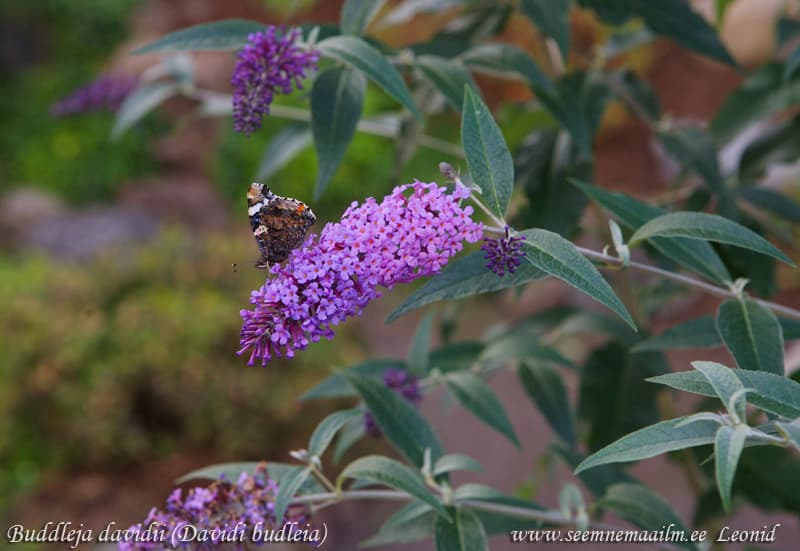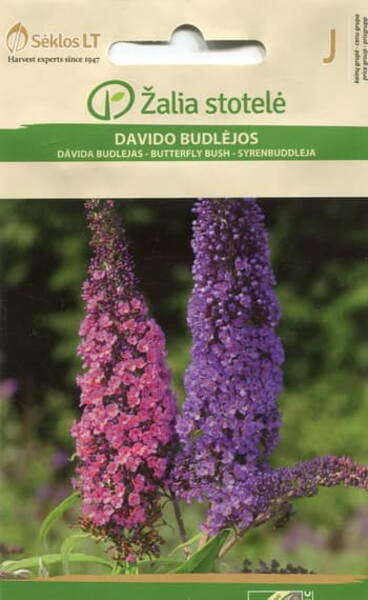A gardener's dream and a butterfly magnet!
Location: budleia is light-loving. For better growth and abundant flowering, buddleia should be planted in a sunny place, protected from cold winds and drafts.
Soil: demanding on the soil, must be moist and sufficiently nutritious.
Care: Buddleia is exceptionally responsive to watering in dry times and to mineral supplements. The use of the latter significantly increases the number and size of inflorescences, as well as the intensity of their colour.
Some of the complexity of the culture in the middle lane is to ensure optimal wintering. In autumn, after frosts, when the leaves turn black and droop, you need to cut the shoots almost to the ground level (they will freeze anyway in winter), and cover the soil under the roots with peat and cover with a dry leaf. Instead, you can simply spud it with dry peat. In this way, dormant buds are preserved at the base of the shoots. Uncovered specimens freeze up to the root neck, which delays their development and flowering for 2-3 weeks. Young shoots are very resistant to spring frosts (tolerate a prolonged drop in temperature to -8 °C).
Reproduction: easily propagated by seeds (but they do not always ripen), which are sown in spring in greenhouses or greenhouses without prior preparation. They germinate in 2-4 weeks. Vegetatively propagated by green and woody cuttings. Cut cuttings in the fall and keep them in a frost-free room. Bushes are transplanted in the spring when young shoots start to grow.
Use: in single and group plantings, for decorating buildings. Buddleia Davidii looks most impressive in a group of 3-4 specimens.

Physical Characteristics: a decidious shrub growing to 3m by 3m at a fast rate. It is hardy to zone 5. It is in flower from July to October, and the seeds ripen from September to October. The scented flowers are monoecious (individual flowers are either male or female, but both sexes can be found on the same plant) and are pollinated by Bees and Lepidoptera (Moths & Butterflies). It is noted for attracting wildlife. We rate it 1 out of 5 for usefulness.
The plant prefers light (sandy), medium (loamy) and heavy (clay) soils, requires well-drained soil and can grow in nutritionally poor soil. The plant prefers acid, neutral and basic (alkaline) soils and can grow in very alkaline soil. It cannot grow in the shade. It requires dry or moist soil and can tolerate drought. The plant can tolerate maritime exposure. It can tolerate atmospheric pollution.
Habitats: requires a sunny position. Prefers rich loamy well-drained soil. Very tolerant of alkaline soils, atmospheric pollution and maritime exposure. Grows best on dry soils of low fertility, where it can seed itself freely. Plants are hardy to about -15 °C, they resprout from the base if cut back by cold weather.
A very ornamental plant, it hybridizes freely with other members of this genus. Polymorphic, there are many named varieties, developed for their ornamental value. The flowers emit a musk-like fragrance like heather honey. Plants flower mainly on the current year's growth so hard pruning in spring will encourage better flowering. An excellent plant for bees and butterflies.
Propagation Seed - cold stratify for 4 weeks at 4°c and surface sow the seed in February/March in a greenhouse. Germination usually takes place within 3-4 weeks at 21°c. When large enough to handle, prick the seedlings out into individual pots and grow them in the greenhouse for at least their first winter, planting them out into their permanent positions in late spring or early summer, after the last expected frosts.
Seedlings are inclined to damp off and so should be watered with care and kept well-ventilated. Cuttings of half-ripe wood, July/August in a frame. Use short side shoots. Very high percentage.
Cuttings of mature wood of the current season s growth, 15-20 cm long, October/November in a frame.












